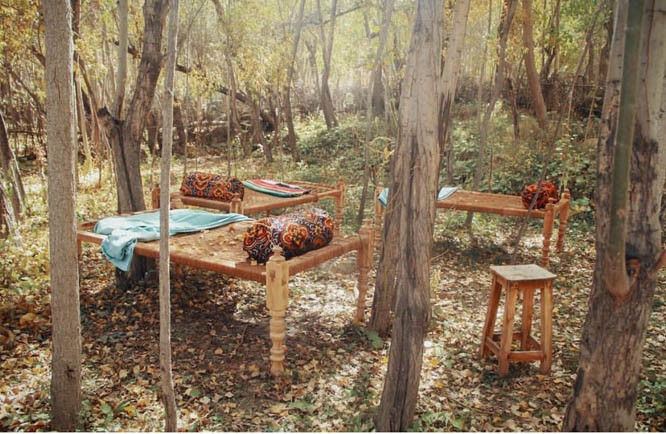
It takes a weekend, some charcoal and the company of incredible people to make one a mountain gal

I am not a mountain gal by any means. Heck, I am not even a nature gal.
"Hiking? Up a hill?" I scoff. The only hiking I do is to walk to the nearest French fries khoka.
So when my best friend sent a Whatsapp photo about a Shigar Edu-Tour, my first question was, "What’s a Shigar?" Till a week before booking my flight, I thought we were going to some area in Sindh. Well, was this beach-before-mountains geographically challenged Meredith Blake in for a shock (one to her wallet and self-esteem).
Travelling to Skardu is like travelling to a foreign country. You pay Rs50,000 in flights (still in debt jbtw), have a layover at the (ahem!) appropriately decorated Islamabad airport and then you board a smaller aircraft and boom, an hour later you are in the mountains. A single airstrip in the middle of towering peaks comprises of the runway and as for the actual "airport" it’s a small picturesque Mrs Honey’s-cottage a short bus-ride away. The tour comprising mostly Proud Karachiites (they were already feeling cold), boarded a coaster for the 45-minute ride to Shigar Valley.
The coaster tore through the mountainside, views of heart stopping beauty framed in the windows. The trees fell away and rose again in the ragged crests and troughs of the mountain range. As I took it all in, I realised with a pang how much of the beauty had deteriorated due to deforestation and urbanisation. Once mighty rivers were reduced to parched streams and there were more patches of dry, arid desert than green plains.
As the coaster drove over a wooden bridge built across a river stream, we got off outside a blue metal gate -- Khanabadhosh Baithak, a black board said in Urdu chalking. We squeezed through the narrow gate into our home for the weekend.
Run by Baneen Mirza and Ahmed Hasan, the KB Baithak is a tent-and-breakfast in the heart of Shigar Valley. One area is the café and through another metal gate in the back is where the tents are set up. I couldn’t believe this was where we will be spending two days; the river stream running at the end of the campsite, hammocks and swings tied into the trees, sunlight glinting through it all as the fall air ruffled the leaves. All those tweets of "wish I could getaway and just read in a hammock" seemed to be coming true right here.
So why were we here? Through a programme called ‘Cube’, designed by architect Zain Mustafa, this group had high-tailed it to Shigar Valley to explore its temples and mosques, built through the ages by the people who had passed through history. Three days, five locations and lots of history to cross through, we asked ourselves, why were we so obsessed with Mughal architecture when people before them had found much better ways of construction? Why weren’t local materials favoured when they stood the test of time?
Mustafa’s Edu-Tour was not just talks outside an ancient building, there was also a tactile component included. Armed with charcoal sticks and rolls of newsprint, we had to draw the mosques and temples as well. As we put our charcoal to paper, it was like going into a trance as we scratched lines and rubbed the charcoal to create clouds of black that gave our drawings dimension and depth. By day two, I had given up on the drawing part, because charcoal and newsprint were difficult to work with. Okay fine, I suck at drawing, that was the real reason. I was content to sit on the hills and wonder about these places of worship -- their humility in the ground, the local hands that had made them, the wood and stone that was locally sourced -- and ponder on the questions Mustafa asked, can we decolonise our architecture? Can we find new ways of engaging with these relics?
Our last stop was Shigar Fort, a tall wooden fort made for military purposes. As I sat on the roof, once used as a look-out for an enemy attack, I thought about the men and women who had passed through here, leaving designs like the tulip from the Dutch conquerors or doors treated with linseed oil, an ancient technique for preserving. We had flown back in time only to find that those before us were much ahead of us, in terms of how to live a creative life.
Words like retreats and getaways are thrown around very casually but there is hardly any disconnect from our devices. With the edu tour I was content to leave my phone in my tent, gather around the table for myriad cups of amazing kehwa, ponder about this small slice of land so far removed from my life in Karachi. It took a weekend, some charcoal and the company of incredible people to make me a mountain gal, after all.